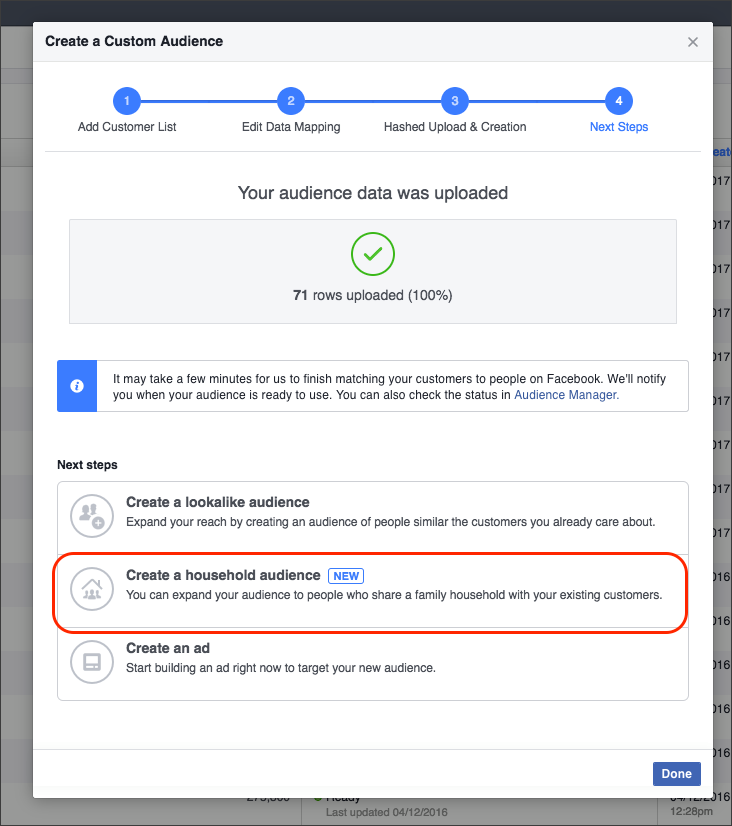Over the last few months, Facebook has been testing a new custom audience which allows you to target entire households.
In this article I’ll discuss how household targeting works and how you can use it as a way to reach new audiences on Facebook.
What is a household audience?
Quite simply, a household audience is a group of family members who live in the same household.
Facebook defines a household as at least two family members who live in the same home. Facebook uses the following data to determine the relationship of members within a household:
- Self-declared relationships on profiles
- Common last names
- Home locations
- Activities (e.g. check-ins, life events)
- Where people log in to the internet
If Facebook doesn’t have enough data to validate that two or more family members are living in the same home, it will then consider the household as a single person.
Just like how a TV ad is shown to everyone living in the same home, Facebook will now let you target family members living in the same home with the same ads.
How do you target using household audiences?
You create household audiences from your customer list.
After you have uploaded your customer list, Facebook will ask if you want to create a household audience from it.

If you already have your customer list uploaded, then head to the Audiences section, select your customer list, and click Actions > Household audiences.
A household audience can take 1-2 days to create. You can only create one household audience per custom audience and cannot use multiple sources for a single household audience.
How to use household audiences
Household audiences are ideal when selling products or services that include more than one family member in the purchase decision.
For example, if you’re selling vacations or tickets to a local show, targeting the entire family and tailoring your creatives with that in mind can convert really well.
You can start your text headline with, “A great family day out at …” with an image of a family having a great time. Since you can target an entire family, during dinner time they may just all be talking about your offer.
You can also use them as gift audiences, targeting families with children’s toys, school supplies, and more. Grocery and restaurant deals will be huge for household audiences too, as you’ll be able to create bespoke family offers.
If you sell a product or service where multiple family members are part of the decision process, household audiences take the guess work out of targeting as you’ll be able to target them more easily.
Household audiences won’t be as useful for businesses that sell impulse items like gadgets or clothing, as these are often solo decisions made on the spot.
You’ll also be able to exclude household audiences from targeting to help reduce wasting ad spend.
For example, if a family member has bought a Netflix membership, there’s a good chance they are sharing it with the rest of the family. Naturally, you should then exclude household families when serving ads to cold audiences as they aren’t going to buy a second subscription.
The same can be done for vacations and hotel bookings. Once a family member books a hotel or vacation, the chances that another parent will book a new vacation days or weeks later is unlikely given the average family only go on holiday a few times a year at the most.
Metrics to measure household targeting
When you select to include a household custom audience within your campaign, you’ll be able to see extra metrics such as the following:
Household reach – total number of households your campaign reached
Household frequency – frequency of reached households
Results – how your ad performed results-wise based on your action
A new way to reach audiences
Household audience targeting is going to be huge for brands that sell products where more than one person is part of the decision-making process.
As you’ll be able to accurately target entire families, you can get more creative with your text headlines, messaging, and creatives since the ads will only be shown to families.
Household audience targeting is currently in testing, and Facebook hasn’t commented on when it will roll out the feature worldwide.
Excited? Leave a comment below on how you’ll be using this feature.